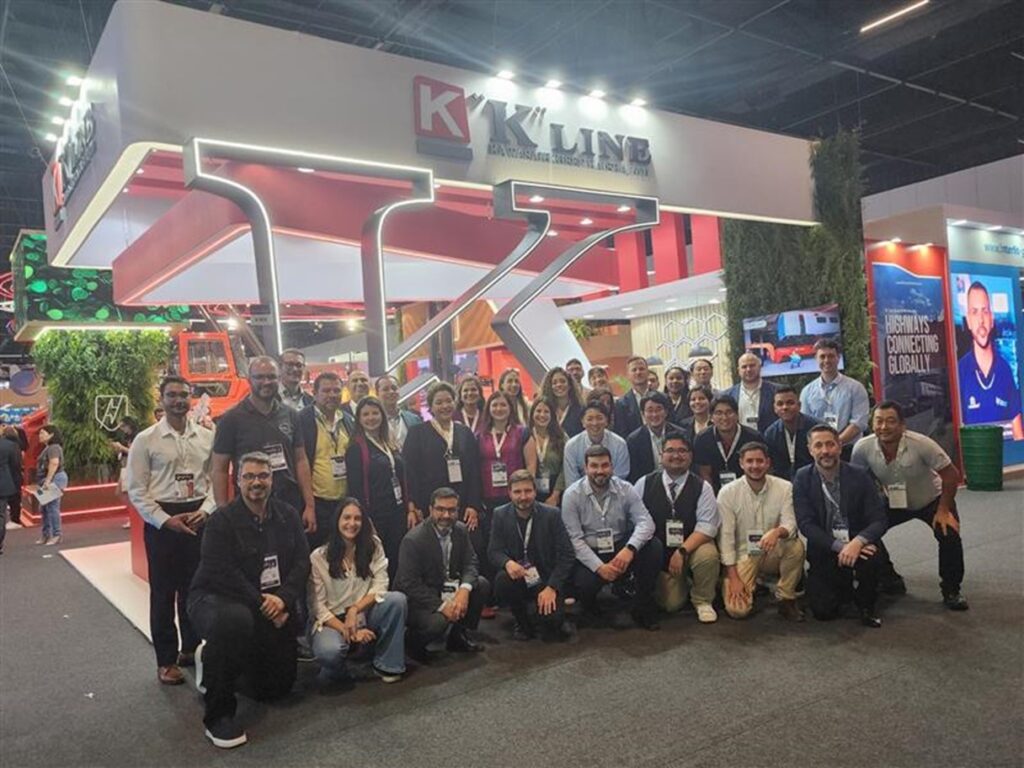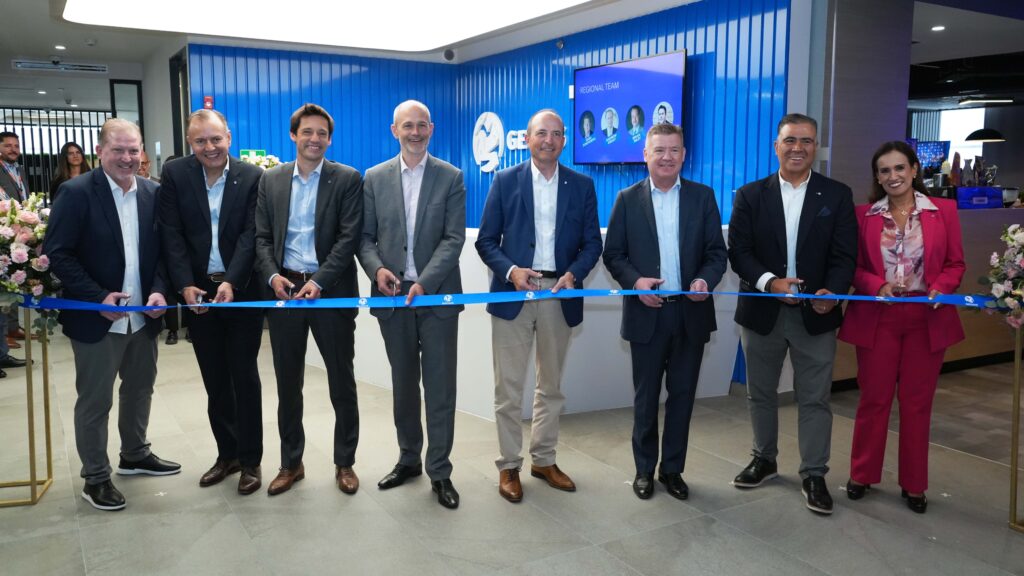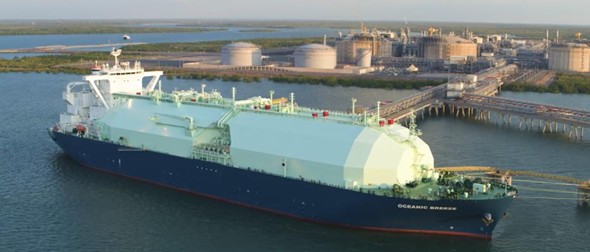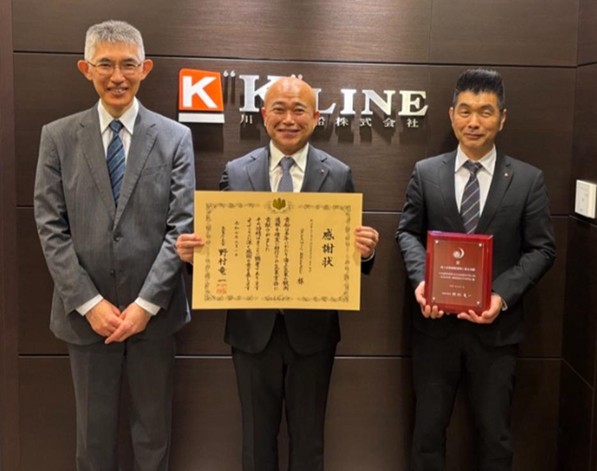On June 17, 2025, a naming ceremony was held for the liquefied CO2 carrier “NORTHERN PATHFINDER” (the Vessel) newly built for Northern Lights JV DA (Northern Lights)*1 in Oslo, Norway. She is the second of three same designed vessels for which Kawasaki Kisen Kaisha, Ltd. (“K” LINE) has been awarded for their ship managements. The Minister of Education of Norway, other government officials, Managing Director of Northern Lights Tim Heijn and people involved in the project were invited to attend the ceremony. Director and Chairperson of the Board Yukikazu Myochin attended as a representative of “K” LINE.
The Norwegian Ministry of Energy organized the Longship Launch Event held on the day of the ceremony and the following day to celebrate the official commencement of the Longship project.*2 On June 18, members of the Norwegian Royal Family, government officials, and people involved in the project were welcomed onboard the Vessel.
The Vessel will be deployed in the world’s first full-scale carbon capture and storage (CCS) value chain project*3, transporting liquefied CO2 from recovery facilities in Norway to a receiving station in عgarden in western Norway. The Vessel will be managed by “K” LINE ENERGY SHIPPING (UK) LIMITED, a London-based subsidiary of “K” LINE.
The Vessel was delivered at Dalian Shipbuilding Industry Co., Ltd. on December 27, 2024 and successfully moved to Norway.
In line with “K” LINE Environmental Vision 2050, its long-term environmental policy, the “K” LINE group is actively promoting various initiatives aimed at supporting our own decarbonization efforts and those of society. “K” Line will drive the CCS business and leverage the knowledge gained from the operation of liquefied CO2 carriers in future business development with the aim of achieving a sustainable society and enhancing its corporate value.
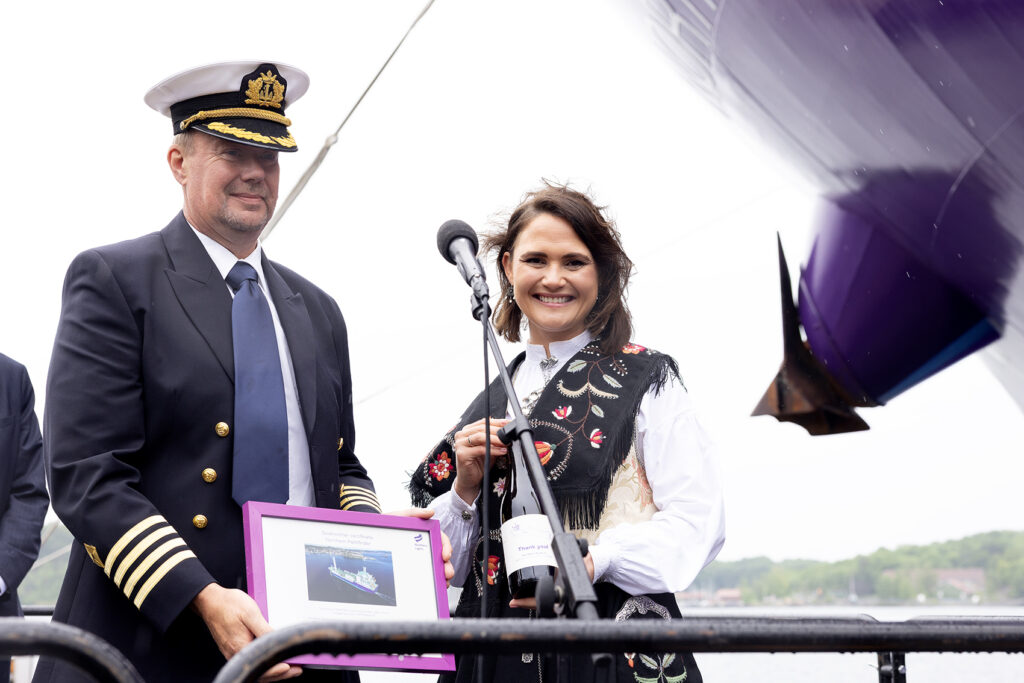
From left:
“K” LINE ENERGY SHIPPING (UK) LIMITED Hroar Skofteby (Captain of Northern Pathfinder)
Kari Nessa Nordtun (the Minister of Education for Norway)
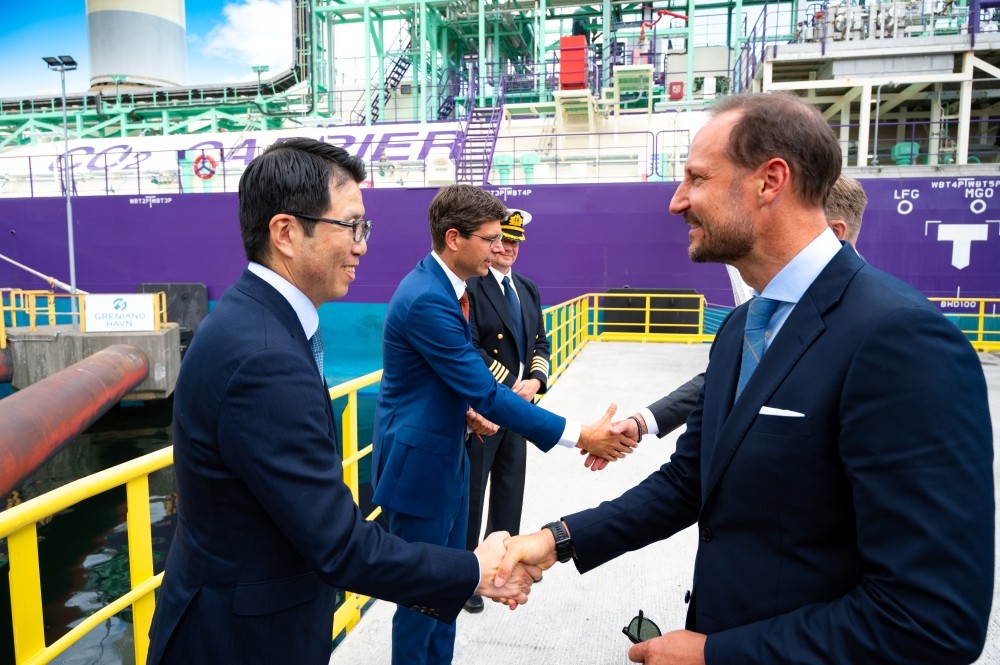
From left:
“K” LINE Kei Onishi (Corporate Officer)
H.R.H. The Crown Prince Haakon of Norway
*1 Northern Lights was established in March 2021 through a trilateral joint investment by Equinor, Shell and TotalEnergies, responsible for the transportation and storage of liquefied CO2 in the project.
*2 The Longship Project is the world’s first international full-scale CCS project for capturing, transporting, and storing industry-derived carbon dioxide (CO2) under the sea bed led by the Norwegian government. As one of the components of the Longship Project, the Northern Lights Project is responsible for the transportation of captured CO2 by ship and its storage under the seabed of the North Sea.
*3 January 30, 2025: Delivery of Liquefied CO2 Carrier “NORTHERN PATHFINDER” to Northern Lights
https://www.kline.co.jp/en/news/liquefied_gas/liquefied_gas-20250130.html
*4 November 26, 2024: Ready for Delivery of Liquefied CO2 Carrier “NORTHERN PIONEER” to Northern Lights
https://www.kline.co.jp/en/news/liquefied_gas/liquefied_gas-20241126.html







